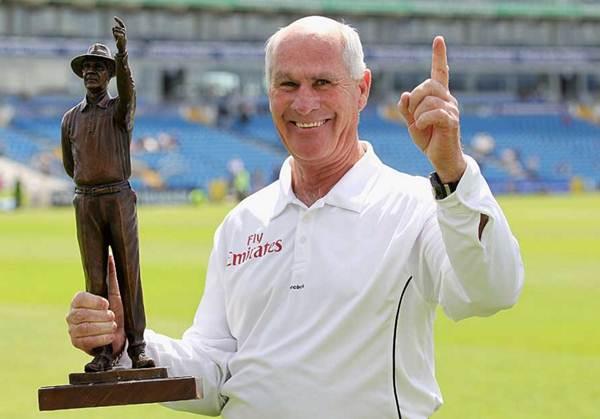11 compelling facts about Rudi Koertzen
View : 741
2 Min Read


Rudi Koertzen was a thorough professional on the field. His pure love for the game is what drew him towards the respectful and tedium job of umpiring. Cricinfo describes him as “a modern umpire in the traditional mould, with an image that is a curious blend of old and new – his flat white cap is offset by a pair of wraparound shades that rarely leave his face except in the poorest of conditions.” Apart from his sharp decision-making skills, he was also famous for his trademark super slow style of raising of the index finger to give a batsman out.
1. Birth:
Rudolf Eric Koertzen was born on March 26, 1949 in Knysna, Cape Province.
2. Early life:
A cricket enthusiast since his youth, he played league cricket while working as a clerk for South African Railways and them switched to umpiring in 1981.
3. Umpiring debut:
Koertzen officiated in his first ODI on 9 December 1992, and in his first Test match from in December 1992. Both his debut matches were between South Africa and India at Port Elizabeth. The same series also saw television replays being used to assist umpires for run-out decisions.
4. Original member of the Elite Panel of ICC umpires:
Koertzen became a full-time ICC umpire in 1997 and was one of the original members of the Elite Panel of ICC Umpires when it was founded in 2002.
5. A lengthy career:
Koertzen officiated in a record 209 ODIs. He is the second umpire after David Shepherd to stand in or more ODIs He surpassed Shepherd’s record of 172 ODIs after the Cricket World Cup match between the West Indies and England in Barbados on 21 April 2007. He stood in his 200th ODI with the match between Ireland and Kenya at Dublin on 11 July 2009. He also became the second umpire, after Steve Bucknor, to stand in 100 Test matches with the 2nd Test of the 2009 Ashes Test match at Lord’s on 16 July 2009. He finished with 108 Tests to his name.
6. Stood in the ICC Super Series:
The South African was selected to umpire in the ICC Super Series (Australia v World XI) in 2005. Other umpires to be selected alongside him were Simon Taufel, Aleem Dar and Darrell Hair.
7. A thorough professional:
Koertzen’s is highly regarded for his professionalism. In September 1999, he refused a bribe to fix the outcome of the final of the Coca-Cola Singapore Challenge between the West Indies and India. In January 2000, he stood in the Test match between South Africa and England at Centurion, where both teams forfeited an innings in order to force a result after South African captain Hansie Cronje had been approached by a bookmaker.
8. Recognitions:
Koertzen was officially voted the top umpire in 2002. He was nominated for the ICC Umpire of the Year award in 2005 and 2006 but on both occasions he finishing third behind Simon Taufel and Aleem Dar.
9. Controversy:
Koertzen has created a couple of controversies and one of the most famous was the misinterpretation of the rules regarding bad light in the final of the 2007 World Cup. The act error had him banned from officiating in the inaugural ICC World Twenty20 tournament later that year.
10. Retirement:
On 4 June 2010, Koertzen announced his retirement from umpiring. He stood in his final ODI on 9 June 2010, between Zimbabwe and Sri Lanka at Harare, and in his final Test from 21-24 July 2010, between Pakistan and Australia at Leeds.
11. Honor:
ICC Bronze Bails Award for 100 ODIs, ICC Silver Bails Award for 200 ODIs and ICC Golden Bails Award for 100 Tests. Apparently, Koertzen is the only umpire to achieve all three of these awards.
Download Our App